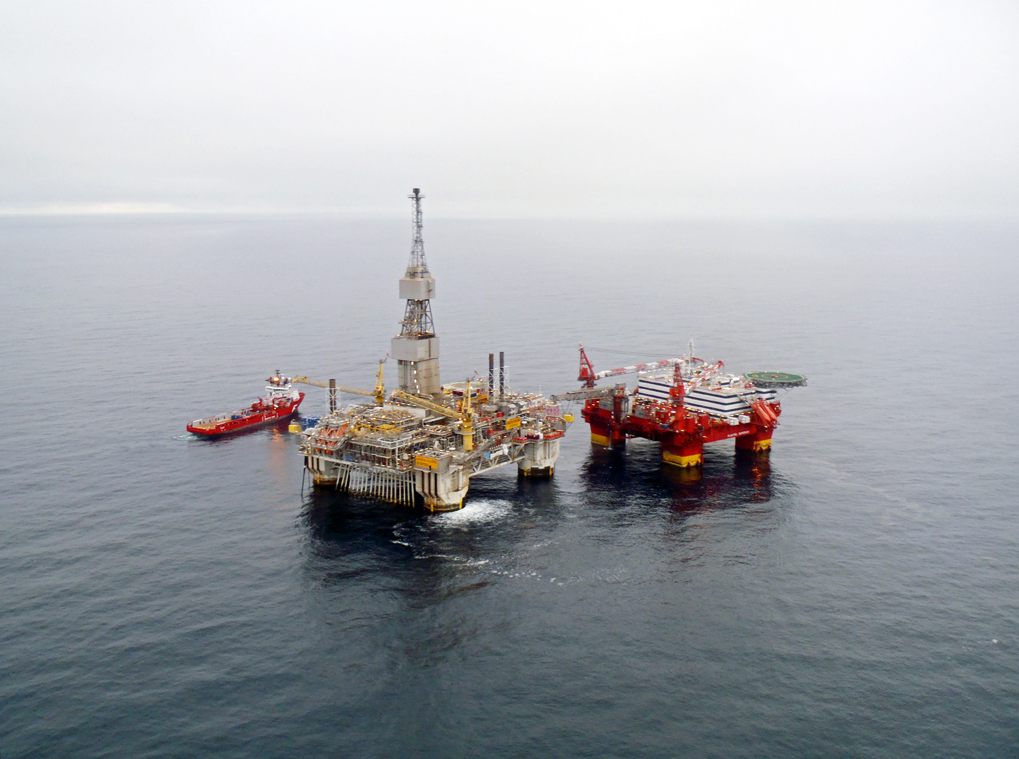“One may discount the possibility that there may be coal, oil or sulphur on the continental shelf along the Norwegian coast.” This is from a letter sent by the Geology Survey of Norway (NGU) to the Ministry of Foreign Affairs in February 1958.
Later the same year a major gas discovery was made in the town of Groningen in the Netherlands. Geologists saw that the rock layers the gas was discovered in stretched into the North Sea to the area between Great Britain and Norway. This awoke interest in exploration for oil and gas off the Norwegian coast.
Norwegian sovereignty over the Norwegian continental shelf was declared on 31 May 1963, and two years later agreements with Great Britain and Denmark were signed dividing the continental shelf according to the median line principle. The first licensing round was announced in April 1965, and the first exploration well was drilled in the summer of 1966. This well proved to be dry.
It was only three years later that drilling rig Ocean Viking made the first workable oil discovery on the field that subsequently was named Ekofisk.
70 fields on the shelf
Production here started in the spring of 1971, and continues in full to this day. In the meantime, it has been joined by 69 other oil and gas producing fields on the Norwegian continental shelf.
In 2011 these fields produced more than two million barrels of oil and around 100 million standard cubic metres (Sm3) of gas every day.
In the 1970s exploration activities were concentrated in the areas in the North Sea. Since then the shelf has gradually been opened, and exploration has spread northwards.
With its 56 producing fields, the North Sea is the heaviest developed and most productive ocean area on the Norwegian continental shelf. In the course of time 13 fields have been closed, while four new fields are under development. The Johan Sverdrup discovery has resulted in new interest in this most extensively surveyed area of the shelf.
The Norwegian Sea is an important supplier, in particular in terms of gas. There are currently 13 producing fields here, and four are under development.
The Barents Sea is Norway's least explored ocean. The Snøhvit gas field is currently the only one in operation, while production on the Goliat oil and gas field is planned for 2013. The recent oil discoveries of “Skrugard” and “Havis” have however led to record interest in new drilling blocks that will be awarded in the 22nd licensing round the same year.
Production fluctuates
In 2010 Norway was that second largest exporter and the sixth largest producer of gas in the world. For oil, Norway is ranked seventh as exporter and fourteenth as producer.
Oil production reached its peak in July 2000. According to the Petroleum Directory, this month an average of 16.33 million Sm3 of oil equivalents were produced, or 102.7 million barrels of oil.
The combined production of oil and gas achieved its highest average level in December 2003, with 24.51 million Sm3of oil equivalents. Since then the volume of produced oil has dropped, while the production of gas has increased.
Total production is expected to remain relatively stable in the years to come. According to the Ministry of Petroleum and Energy and the Norwegian Petroleum Directorate Fact Booklet 2012, gas sales will increase to between 105 and 130 billion Sm3 in the next decade. Oil production is likely to decline gradually.
Production volume reflects how many discoveries are made and how many fields that at any time are put into operation. However, technological advances have resulted in several fields that began in the 1970s and the 1980s producing far beyond the lifespan that was considered realistic when the plans for production and operation were submitted. Measures such as injecting water to extract more oil from reservoirs has contributed to extend the life of Ekofisk by another 40 years.
Originally it was suggested that it was possible to recover 17 percent of the oil in the field. Now operator ConocoPhillips believes that it is possible to achieve a recovery rate of over 50 percent.
Norway and the North Sea's largest oil field – Statfjord – was originally intended to operate until 2009. Operator Statoil now expects that operation can continue until 2020.
Enormous values
Globally, the oil recovery rate is about 22 percent. On the Norwegian shelf it is around 46 percent, while gas is at 70 percent.
So far, 43 percent of all oil and gas that it is thought possible to produce has been recovered from the shelf. Measures that can maintain production on the old giant fields have a major effect on production statistics, and provide substantial revenues for both companies and the government.
Since production began on the Norwegian continental shelf more than 40 years ago, the oil and gas industry has contributed nearly NOK 9,000 billion to the country's gross domestic product. Added value is more than twice that of the land-based industry, and around 15 times the total added value in the primary sector.
